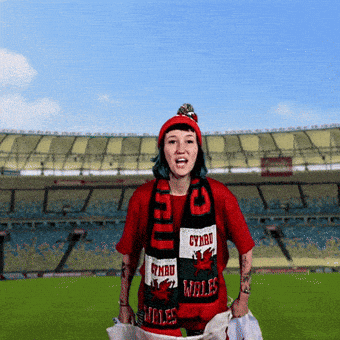- UniScoops
- Posts
- What happens when languages meet? 💬
What happens when languages meet? 💬
Plus: Useless Body Parts, The Interior Lives of Planets, and The Archaeology of Night 🌙
Howdy, this is UniScoops! We’ll take you on an academic rollercoaster that is more up and down than British weather.
So, without further ado…
Here’s a taste of what we’re serving today:
What happens when languages meet? 💬
PLUS: Useless Body Parts, The Interior Lives of Planets, and The Archaeology of Night.
LINGUISTICS
What happens when languages meet? 💬

It would be convenient for us to imagine a 1:1 mapping between a place and language spoken. In Spain, people speak Spanish, and in England, people speak English. Correct? Not really. In an increasingly globalised and interconnected world, this is becoming much further from the truth. In fact, historically, this has rarely been true. In today’s scoop, we will explore what can happen when different languages interact, and what factors might encourage these languages to mix or stay separate. And remember: as with most issues in sociolinguistics, it’s rarely just about language. In this case, we need to consider the socio-political climate of the community, and whether one language is seen to be more prestigious than another. Let’s unpack this!
💡 Things to consider
Diglossic Communities and Prestige: In some multilinguistic contexts, each major language is seen as having its own, separate function. This is usually enforced by laws and social expectations too. Take the Kondoa district in Tanzania. The national language, Swahili, is used in official contexts such as business and politics. We could say Swahili has overt prestige; it is most associated with power and status. Simultaneously, the vernacular language Rangi is used in more informal contexts, where it would be advantageous for a speaker to demonstrate an ingroup identity with other speakers. Essentially, this makes Rangi covertly prestigious: it is as if the speaker is saying “I am one of you too!”. At a local market, speaking in Rangi rather than Swahili might make you more likely to secure a discount. In diglossic communities, the languages don’t really influence each other; their roles are separate and well defined. Can you think of any other examples of diglossic communities?

… AKA speaking Rangi at the local market
Borrowing: In many other contexts, language contact DOES affect at least one of the languages. One way this can happen is through borrowing, where elements of one language are incorporated into another. Let’s look at Welsh and English. Whilst there has been influence in both directions, the historical dominance and insitutionalised prestige of English has meant its influence on Welsh has been greater than Welsh’s influence on English. In Welsh llofft (upstairs) was borrowed from the English loft, and its meaning has since broadened to refer to the place people sleep, rather than specifically a storage space. In other instances, languages are fused even more. Many Turkish students practising English will insert phrases from their own language such as yani (I mean) or ama (but). This is an example of code-switching, the act of alternating between two languages. It can happen because a speaker has forgotten the word in one language, or perhaps because the speaker wants to demonstrate being part of a certain social identity. Why else might people code-switch?

Pidgins and Creoles: A pidgin (NOT pigeon) is a makeshift language that is formed when speakers who have no language in common are placed together. This usually arises from very unnatural conditions; many pidgins were formed as a result of the slave trade, as slaves from different places were often mixed together as a way to prevent them from rebelling. A pidgin only turns into a creole when it becomes the native language of the next generation. Take Tok Pisin, an English-based creole in Papua New Guinea:
Mi wok long ofis bilong haus sik
(I work in the office of the hospital)You can see lots of similarities already. Note the innovative compound formation of haus sik for hospital (most likely coming from house sick). Pretty cool, huh!? What else can you notice?

Wrong kind of pigeon :/
🔎 Find out more
Meyerhoff, M. 2011. Introducing sociolinguistics. London: Routledge.

🍒 The cherry on top
🦷 Useless Body Parts: Ever wondered why we have wisdom teeth we don't need or muscles that don't quite work anymore? This YouTube video dives into the surprising world of our ‘useless’ body parts. Great if you’re interested in Biology!
🌎 The Interior Lives of Planets: Ever wondered what goes on beneath your feet? Using clues from earthquakes and even the composition of diamonds, scientists are piecing together the secrets of our planet's interior. Learn more in this article for those who are interested in Physics or Geology!
🌙 The Archaeology of Night: Artificial lights are a hallmark of our modern world, but have you ever stopped to think about the night sky we've lost? This essay explores the concept of "night archaeology" and how the absence of true darkness may be affecting us in surprising ways. A must-read if you’re into Archaeology or Anthropology.

👀 Keep your eyes peeled for…
17th June:
18th June:
19th June:
20th June:
22nd June:

🗳️ Poll
How was today's email?We'd love to hear your feedback! |
That’s it for this week! We’d like to thank this week’s writer: Holly Cobb (Linguistics).
💚 Like UniScoops?
Forward this edition to someone who’d love to read it for extra kudos!
📢 Want to tell us something?
Reply to this email to tell us what you think about UniScoops, or to give us any suggestions on what you’d like to see.
🧐 New to UniScoops?
Get your weekly fix of academia with our fun, thought-provoking newsletter. No jargon, no fluff, just the good stuff. Subscribe today.
Reply